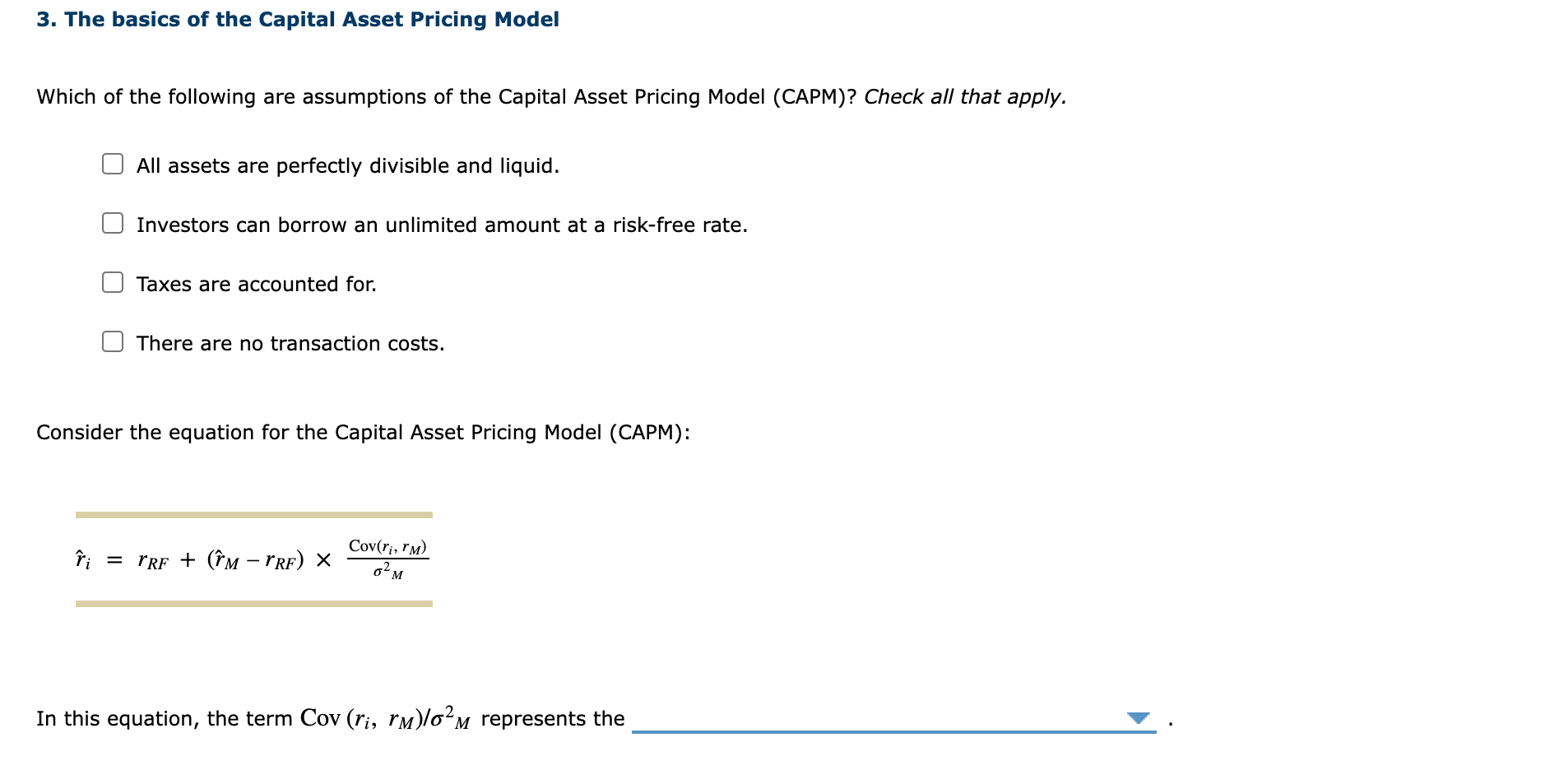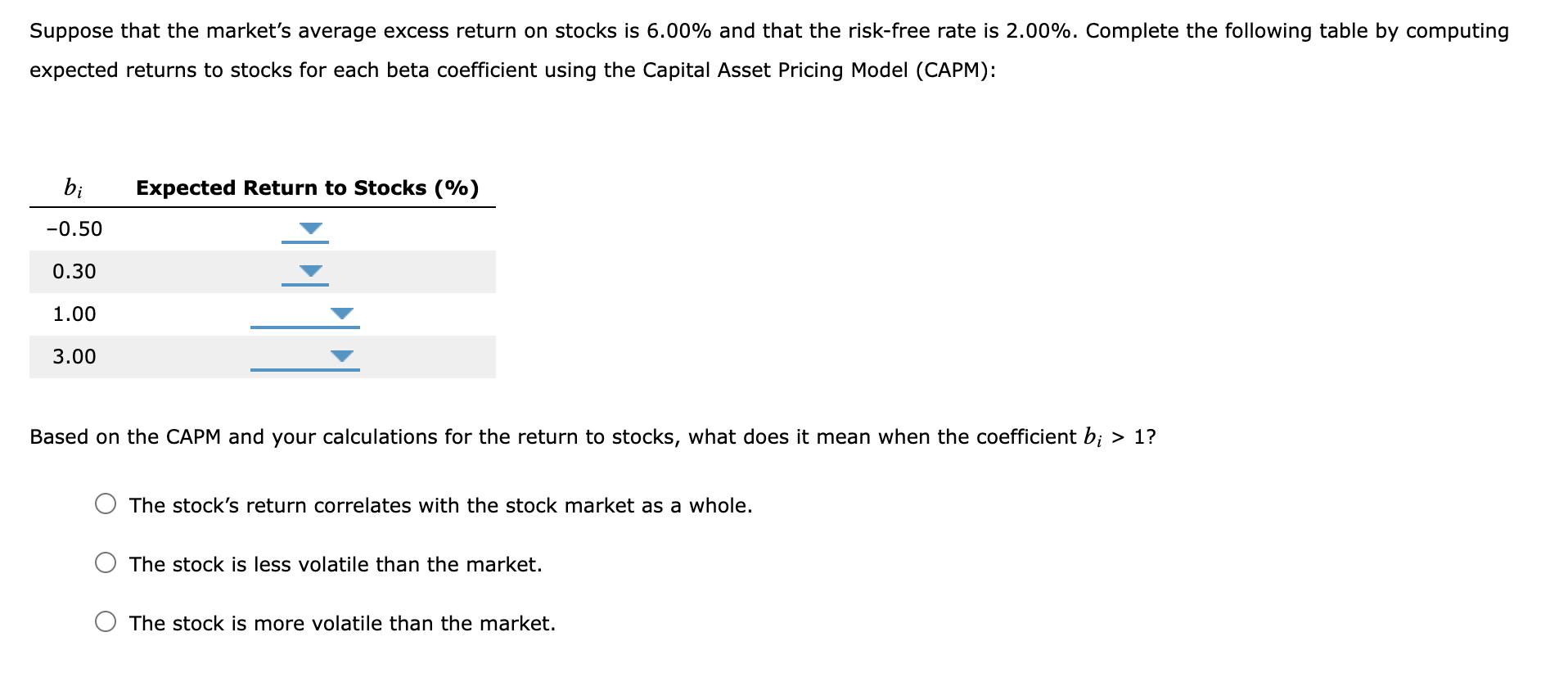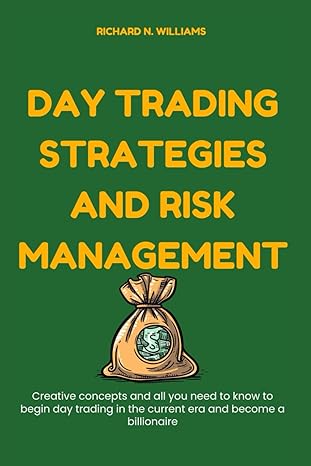

3. The basics of the Capital Asset Pricing Model Which of the following are assumptions of the Capital Asset Pricing Model (CAPM)? Check all that apply. All assets are perfectly divisible and liquid. Investors can borrow an unlimited amount at a risk-free rate. Taxes are accounted for. There are no transaction costs. Consider the equation for the Capital Asset Pricing Model (CAPM): Cov(ri, rm) i = rri + (m - PRF) X 62 M In this equation, the term Cov (ri, rm)/om represents the Suppose that the market's average excess return on stocks is 6.00% and that the risk-free rate is 2.00%. Complete the following table by computing expected returns to stocks for each beta coefficient using the Capital Asset Pricing Model (CAPM): bi Expected Return to Stocks (%) -0.50 0.30 1.00 3.00 Based on the CAPM and your calculations for the return to stocks, what does it mean when the coefficient bi > 1? The stock's return correlates with the stock market as a whole. The stock is less volatile than the market. The stock is more volatile than the market. 3. The basics of the Capital Asset Pricing Model Which of the following are assumptions of the Capital Asset Pricing Model (CAPM)? Check all that apply. All assets are perfectly divisible and liquid. Investors can borrow an unlimited amount at a risk-free rate. Taxes are accounted for. There are no transaction costs. Consider the equation for the Capital Asset Pricing Model (CAPM): Cov(ri, rm) i = rri + (m - PRF) X 62 M In this equation, the term Cov (ri, rm)/om represents the Suppose that the market's average excess return on stocks is 6.00% and that the risk-free rate is 2.00%. Complete the following table by computing expected returns to stocks for each beta coefficient using the Capital Asset Pricing Model (CAPM): bi Expected Return to Stocks (%) -0.50 0.30 1.00 3.00 Based on the CAPM and your calculations for the return to stocks, what does it mean when the coefficient bi > 1? The stock's return correlates with the stock market as a whole. The stock is less volatile than the market. The stock is more volatile than the market








